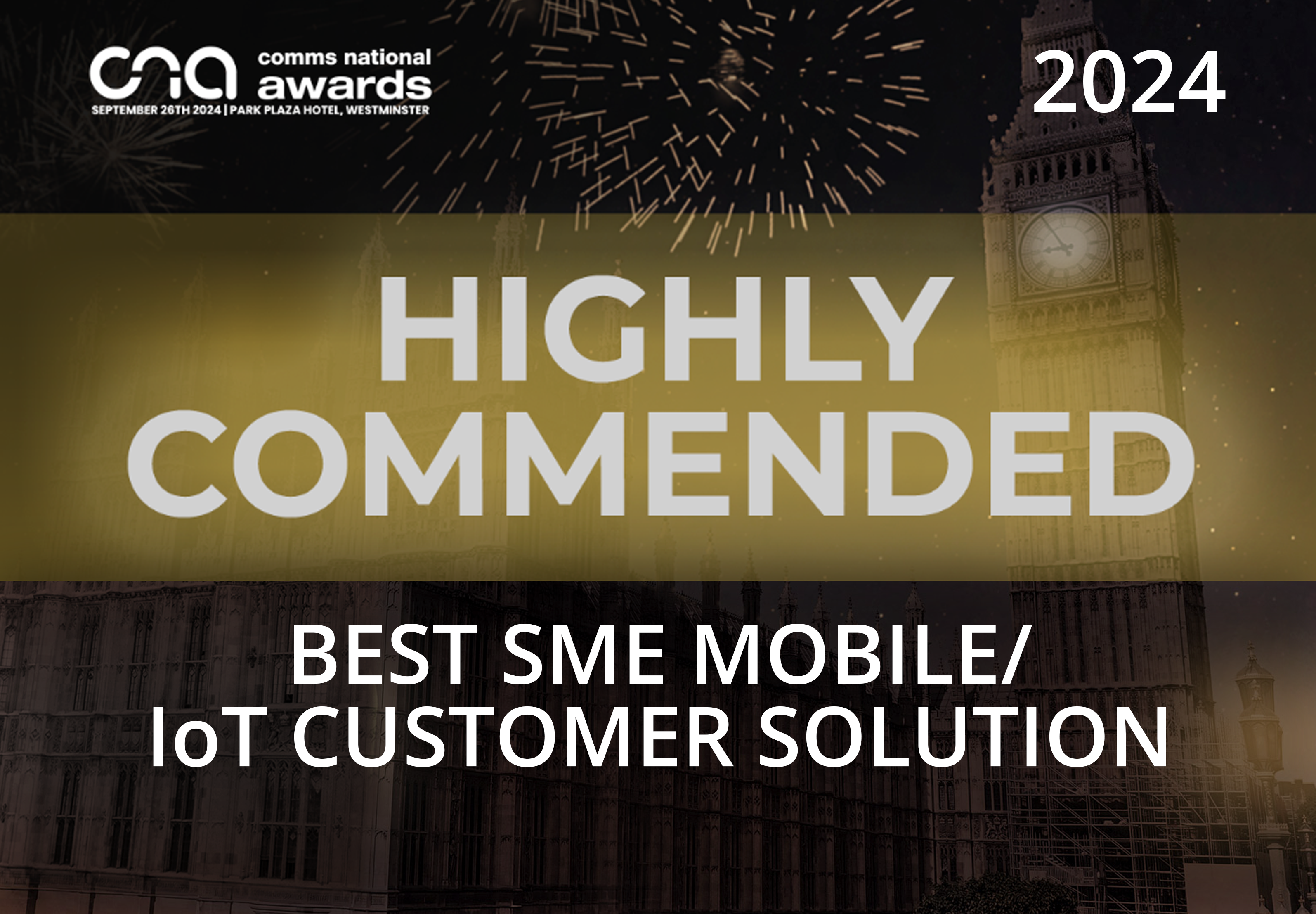IoT Security
Safeguarding your Connected Devices
IoT devices, whilst incredibly beneficial, are also potential entry points for cyberattacks. They are often seen as easy targets with any device ultimately only as secure as the network that it is connected to and operates over.
As the number of IoT devices used to assist businesses grows, so does the attack surface which hackers can then search for and exploit vulnerabilities through – ensuring the security of your IoT network has never been more crucial!

Understanding the Security Threat Landscape
The sophistication of attacks is on the increase.
AI and Machine Learning are now used extensively to significantly improve both the scale and success of attacks!
Any device connected to the public internet is an opportunity for hackers to exploit, who will typically start by scanning for visible IP addresses. Once located they will search for weaknesses within the associated device or its configuration.
For example, this may be a port or interface which has been mistakenly left open, a weak or default password that has been configured or outdated firmware containing a known vulnerability.
%
IoT Malware attacks up 107% year-on-year
%
50% of all UK businesses experienced a cyber breach in last 12 months
526 new malware variants detected per day
%
IoT Malware attacks up 107% year-on-year
%
50% of all UK businesses experienced a cyber breach in last 12 months
526 new malware variants detected per day

Common Threats & Attack Types
Brute force
With the help of AI, hackers cycle through username and password combinations gaining access to a network through default or weak settings.
Hijacking & Malware
Malware allows devices to be hijacked to gain control of a network, execute commands, steal customer data or form botnets.
Botnet
Often used to compromise many devices which subsequently once formed may execute more large scale attacks such as Distributed Denial-of-Service (DDoS).
Denial of Service
Targeted high volume data traffic prevents the use of a device or network port. These can be externally targeted or launched internally on a network via malware and botnet attacks.
Ransomware
Once access to a network has been achieved, this software will lay silent with an objective to penetrate in to as many devices as possible before implementing the attack to corrupt customer data. Encryption prevents customer access prior to a ransom request to retrieve.
Business Impact and Cost
Ransoms
Encrypted or corrupted data with no access until a ransom demand has been paid. Both can be potentially crippling to the business.
Loss of Service
Designed to rapidly shut down business operations.
Data Theft or Loss
This may take the form of stolen sensitive customer information or complete data corruption or loss.
Unauthorised Access & Control
Obtain access to other services connected to the data network e.g. security systems and access control, which may in turn lead to physical access to properties and the deletion of any video evidence. Airconditioning or refrigeration systems may be shut down, damaging work and storage environments.
Reputational damage
Public knowledge of any security breach often leads to ongoing reputational damage and credibility issues, leading to loss of customers.
12.6%
12.6% of all company revenue exposed to cyber threats
£31K
£31,000 – estimated average loss per day for a UK SME due to cybersecurity breaches*
$8
Trillion
Cost of cybercrime to businesses worldwide in 2023
$24
Trillion
Expected cost of cybercrime to businesses worldwide by 2027
*From research carried out by Censuswide in April 2024
Read our White Paper:
Read our White Paper:

Securing IoT Devices: Industry Standard Practices
To protect an IoT network both the device itself and the data transmitted across the network must be secured. To achieve this whilst allowing safe remote access to your devices, as a minimum the following best practice for end-to-end IoT security when using the Internet is necessary:
Device
Ensure that the manufacturer’s default password is changed to something far stronger.
Ensure that the firmware is updated promptly on release by the manufacturer. Automate these processes wherever possible.
Network
Avoid using public IP addresses for remote access.
Encrypt data traffic if transmitting over the public internet.
Use Virtual Private Networks and APNs.
Plan networks carefully to limit the impact of any breach.
Application
Typically located in the cloud, robust firewalls and associated zero-trust network architectures should be deployed to block and report attacks.
Introduce real time monitoring and threat detection.
What are the limitations and challenges of these methods?
User error
One of the biggest threats to a cyberbreach! Misconfigured devices can easily lead to a network becoming exposed and vulnerable to attack or unauthorised access.
Remote Access
The use of public IP addresses, even with hardened security, still renders the device visible to the Internet. Even if the network itself isn’t accessed, a Denial of Service attack could still prevent a device or network from being used.
Firmware
Industry reports show that on average it takes organisations 55 days to patch 50% of critical vulnerabilities* Often it may not even be possible to update or support outdated and legacy hardware making them particularly vulnerable. Businesses may have potentially 1000s of devices to patch, making this extremely time intensive and subject to delay and an increase in user error.
Device Resource
Adding the required security measures to a device can significantly increase the resource demands on it, leading to higher cost of manufacturer and power consumption.
Passwords
Weak or default passwords used are far more liable to be accessed with Brute Force attacks.
Engineering Resource
It’s good practice to implement multiple lines of defence, however this may be extremely time consuming, both initially and with ongoing management.
The Recommended Solution: Spitfire’s One Network
How can our solution help protect your IoT network, devices and company assets? Even though industry best practice may have been followed, why not have complete peace of mind, with every device completely invisible and unreachable to internet hackers, within a secure private network?
One Network provides end-to-end connectivity and complete network isolation for your devices and the data transfer to your platform or application, bypassing the public internet entirely. With the flexibility to use mobile, fixed line or cloud connectivity, with simple and low-cost set-up.
Where access is required from the Internet, or indeed if your business is not quite ready to go for a complete private IoT network, as you may have existing devices that you may want to incorporate, we can provide a single point of entry via our enterprise grade hosted Firewall as a Service, using fully resilient high availability Fortinet FortiGate firewalls.
Why choose Spitfire for your IoT network solution?
Low setup and ongoing management costs (currently we are providing One Network private IoT networking at no additional cost!).
Total security for complete peace of mind!!! A private IoT network with no visibility of the device from the internet with secure end-to-end data transmission to your chosen platform, site or cloud hosting provider.
IoT Resources & More Info
Speak to an expert today










We’re here to help!
Feel free to call or email our team on:
020 7501 3344 or enquiries@spitfire.co.uk
The information submitted on this form will be used solely for the purpose of responding to your enquiry. A copy of our Privacy Policy may be found here
What is an IMSI?
The international mobile subscriber identity (IMSI) is a unique reference number that identifies every user of a mobile network (MNO) or a mobile virtual network (MVNO). Additionally, a mobile telephone number (MSISDN) may be allocated to an IMSI, but this is optional and dependant on the desired use of the SIM. If the SIM is to be used for voice on the voice path of the mobile network or SMS then a MSISDN will be allocated, if the SIM is for data only then a MSISDN may not be allocated.
What is an IMSI?
The international mobile subscriber identity (IMSI) is a unique reference number that identifies every user of a mobile network (MNO) or a mobile virtual network (MVNO). Additionally, a mobile telephone number (MSISDN) may be allocated to an IMSI, but this is optional and dependant on the desired use of the SIM. If the SIM is to be used for voice on the voice path of the mobile network or SMS then a MSISDN will be allocated, if the SIM is for data only then a MSISDN may not be allocated.
Spitfire Customer Portal
We’re here to help!
Feel free to call or email our team on:
020 7501 3344 or enquiries@spitfire.co.uk
The information submitted on this form will be used solely for the purpose of responding to your enquiry. A copy of our Privacy Policy may be found here
